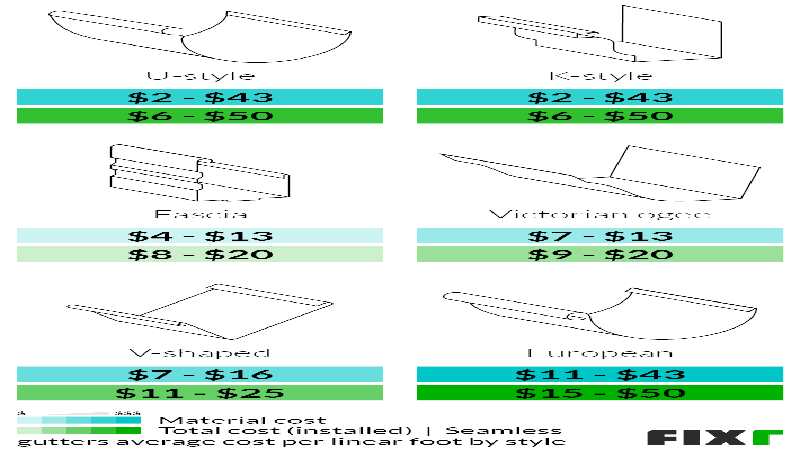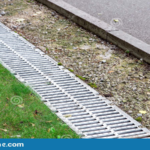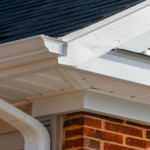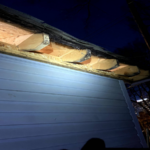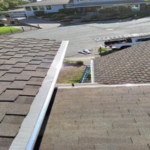- First, you need to purchase the necessary tools and materials. You will need a ladder, a level, a tape measure, hangers, end caps, sealant, and of course, the gutters themselves.
- Next, you need to measure the length of the area where you will be installing the gutters. This will help you determine the size and number of gutters you need to purchase.
- Once you have all the necessary materials, you can now start installing the gutters. Begin by attaching the hangers to the fascia board, making sure that they are level.
- Next, insert the gutters into the hangers and use the level to make sure that they are installed properly.
- Once the gutters are installed, you can now attach the end caps and seal the seams with sealant.
- Finally, test the gutters by pouring water into them and see if they are draining properly. If not, then you may need to make some adjustments.
How do you install simple gutters?
- Begin by measuring the length of your gutter run. You will need to purchase gutters that are long enough to cover the entire length of your roofline.
- Once you have your gutters, you will need to install gutter hangers every two feet or so along the length of your roofline.
- To install the hangers, simply nail them into place.
- Once the hangers are in place, you can then slide your gutters into place.
- To secure the gutters, use screws or gutter clips.
- Finally, you will need to install downspouts at the end of each gutter run. Downspouts can be installed using brackets or they can be attached directly to the house.
What are the easiest gutters to install?
- Vinyl gutters: Vinyl gutters are made from a durable, weather-resistant material, and they come in a variety of colors. They’re also relatively lightweight, which makes them easy to work with. Most vinyl gutters can be installed with just a few basic tools, and they don’t require any special skills or training.
- Aluminum gutters: Aluminum gutters are another popular option because they’re easy to install and they’re very durable. They’re available in a variety of colors, and they can be custom-fit to any home. Aluminum gutters are also very low-maintenance, which is a major advantage.
- Copper gutters: Copper gutters are a more expensive option, but they offer a number of benefits. Copper gutters are very strong and durable, and they have a natural resistance to corrosion. They’re also very easy to install, and they can be custom-fit to any home.
What is the difficulty of installing gutters?
There are a few difficulties that can be associated with installing gutters. The first is that it can be a difficult and time-consuming process, depending on the size and style of the gutters. The second is that it can be difficult to find the right materials and tools for the job. The third is that it can be tricky to get the gutters installed correctly and securely.
What is the rule of thumb for gutter installation?
There is no definitive answer to this question as the installation of gutters depends on a number of factors, including the type of roof, the climate and the amount of rainfall in the area. However, there are some general guidelines that can be followed when installing gutters.
The first step is to calculate the amount of rainfall that is expected in the area. This information can be found online or by contacting the local weather station. Once the rainfall amount is known, the next step is to determine the size of the gutters required.
The size of the gutters will depend on the type of roof. For example, a flat roof will require smaller gutters than a pitched roof. The type of roof will also dictate the type of hangers that are required.
Once the size and type of gutters have been determined, the next step is to install the gutters. This process will vary depending on the type of gutters being installed. However, the general process is to first install the hangers, then attach the gutters to the hangers and finally, secure the gutters to the roof.
After the gutters have been installed, it is important to regularly check them for any leaks or damage. Gutters should be cleaned out at least once a year to prevent build-up of leaves and debris.
Is it cheaper to install gutters yourself?
No, it is not cheaper to install gutters yourself. The cost of materials and tools needed to do the job correctly can be expensive. You will also need to take the time to learn how to properly install gutters. The cost of hiring a professional to install gutters is typically much less than the cost of doing it yourself.
Can I install gutters myself?
No, you shouldn’t install gutters yourself. Gutters should be installed by a professional because they require special tools and training. DIY gutters can be installed, but they may not function as well as professionally installed gutters.
Do gutters go under drip edge?
Gutters are designed to protect your home from water damage by channeling water away from the foundation. Most homes have gutters installed along the roofline, and they are typically made of aluminum or vinyl. The gutters are attached to the fascia board (the board that runs along the edge of the roof) with hangers, and they are usually equipped with a downspout to direct water away from the house.
Drip edge is a metal flashing that is installed along the edges of the roof. It is designed to direct water away from the roof and into the gutters. Drip edge is usually made of aluminum or galvanized steel, and it is available in a variety of colors to match the gutters. Some homeowners choose to install drip edge even if they don’t have gutters, as it can help to prevent water damage to the roof.
What is the gap between drip edge and gutter?
The gap between the drip edge and the gutter is typically about 1/4 inch. This gap allows water to flow off of the roof and into the gutter, while also allowing any debris that may fall off of the roof to fall to the ground instead of into the gutter.
Conclusion
There you have it! Gutter installation doesn’t have to be a daunting task. With the proper training, you can easily and efficiently install gutters.
